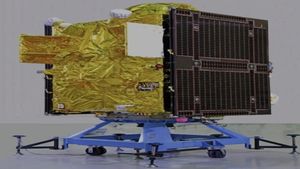SpaceX has postponed its planned launch of the Falcon 9 rocket carrying the latest batch of Starlink satellites, rescheduling the liftoff for early Tuesday morning, February 4. The delay, caused by adverse weather conditions, highlights the challenges faced by space agencies and commercial operators amid unpredictable environmental factors.
The Falcon 9, originally set to launch on Monday at 3:37 a.m. EST from Cape Canaveral Space Force Station, was postponed due to a dense fog advisory issued by the National Weather Service. The advisory warned drivers of visibility dropping to ¼ mile or less across East-Central Florida, prompting officials to prioritize safety over schedule.
While SpaceX did not publicly disclose any specific reasons beyond the weather conditions, it is not uncommon for rocket launches to face delays due to mother nature's whims. The new target launch window for the Falcon 9 is now set for early Tuesday morning.
This launch is especially noteworthy as the Falcon 9 rocket is scheduled to carry 21 Starlink satellites, along with 13 equipped with groundbreaking direct-to-cell capability, marking another step toward increasing global internet access. For many, these satellites represent hope for reliable broadband service—especially for those residing in remote areas.
Expecting the Falcon 9 to ideally deploy the satellites about 65 minutes after liftoff, SpaceX has been livestreaming its launches through its X account, allowing enthusiasts and stakeholders to follow the action closely. The booster, having been used for 20 flights previously, will attempt to land on the drone ship "Just Read the Instructions" approximately eight minutes post-launch.
Rick Neale, Space Reporter at Florida Today, noted other plans for Monday evening, where another Falcon 9 rocket is still set to launch from NASA’s Kennedy Space Center, scheduled between 6:32 p.m. and 7:32 p.m. This mission will deploy two Maxar Space Systems-built WorldView Legion imagery satellites, contributing to various earth monitoring and satellite imaging efforts.
Experts at the Space Force predicted over 95% chance of favorable weather for this separate mission, which stands apart from the originally planned Starlink mission. This mirrors SpaceX's operational model as they continually push to expand their satellite constellation—currently nearing 7,000 satellites orbiting low Earth orbit (LEO).
With past launches solidifying nearly two-thirds of SpaceX's operations dedicated to bolstering the Starlink network, the upcoming Tuesday launch serves as another exciting prospect for the company and space enthusiasts alike. The Starlink program has blossomed from embryonic concepts to representing the largest satellite constellation ever assembled, drastically changing the global approach to internet accessibility.
SpaceX has engaged the public's interest through successful and repeated launches, and new plans continue to emerge. The company's ambition—to provide services across varied landscapes—creates anticipation as it perseveres through challenges such as current weather conditions.
The advances being made, and the technological integrations involved with the Starlink missions, have caught the eye of many, highlighting the significance of having reliable global internet service. Moving forward, as SpaceX targets the governmental and commercial sectors with its satellite deployments, many will remain highly interested to observe the ramifications on society at large and the innovative paths taken by the space technology firm.
For those eager to learn of developments leading up to launch day, SpaceX will provide periodic updates on its plans and preparations. Viewers can tune directly to their livestreams to witness these remarkable endeavors with the hope of favorable launches.



